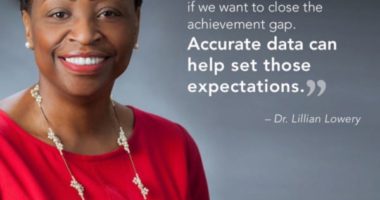Education Trust analysis of 2009 PISA results: United States is average in performance, but leads the world in inequity
To close America’s global achievement gap, focus on gaps within our own borders
WASHINGTON (December 10, 2010) - Despite near-continuous innovation in most fields, the way America educates its young people has changed very little since the Industrial Revolution. And new international data show that Industrial-Age schools - schools designed to prepare a handful of students for college, but most for jobs in factories, mills, and the like - simply aren’t preparing students for a Digital-Age world.
In 2009, the United States was among 34 developed countries that participated in the Programme for International Student Assessment (PISA). On that exam, our nation has improved in math and science since 2006. But despite those improvements, our students are at best still in the middle of the global pack at a time when education plays a decisive role in the success of our young people and the strength of our economy.
According to the new PISA data released earlier this week, American high schoolers now rank 12th in reading, 17th in science, and 25th in mathematics. Yet despite that seemingly higher rank in reading, only about one-third of 15-year-olds in the United States meet reading benchmarks that indicate readiness for higher level work.
These results reveal the ”brutal truth” about our education system, as U.S. Education Secretary Arne Duncan observed this week: American students are ill-prepared for the demands they will face after high school.
”We must do better by our students to ensure that we close the international achievement gap between the United States and leading nations,” said Kati Haycock, president of The Education Trust. ”But we’ll never regain our global edge without closing the domestic gaps that separate low-income students and students of color from their peers within our own borders. Unfortunately, where America ranks high is in inequality.”
Many of the countries at the top of the performance rankings - Canada, Finland, and Korea, for example - rank noticeably at the bottom of the list measuring the size of socioeconomic-status (SES) gaps. On the other hand, the United States has the fifth largest gap in reading between low-SES students and their high-SES classmates. In reading, for example, students attending our high-poverty high schools performed 19 percent below those from higher income schools.
But large disparities in socioeconomics don’t fully explain our middling performance: Our low-SES students are less likely to be among their nations high-performing students than low-SES students in other countries. Students in New Zealand, for example, are on average of lower socioeconomic status than are U.S. students, but they far outperform us. In fact, according to OECD, the United States would actually end up with a lower ranking on PISAs reading assessment if all 34 developed countries had the same average socioeconomic status.
On average, our white and Asian students actually perform about as well in reading, math, and science as the average student in high-performing countries like Canada and Japan. But consider these startling parallels:
- Our nation’s Latino students perform at about the same level as the national average in nations like Turkey and Dubai.
- African-American students are on par with the national averages in non-OECD countries such as Serbia and Bulgaria.
At a time when low-income students and students of color together represent the majority in Americas public schools, they are being outpaced and outperformed by students from most of the developed world. Thats certainly not good for them. But it isn’t good for our country as a whole, either.
“There’s no question that we as a nation are capable of ensuring that all kids get the kind of rigorous education they need to succeed after high school,” said Haycock. “Whether you are focused on the health of our economy or the health of our democracy, these results make very clear that America’s young people need to learn more in school. How we respond to and act on these new findings, however, will say a lot about our own beliefs and commitments.”



